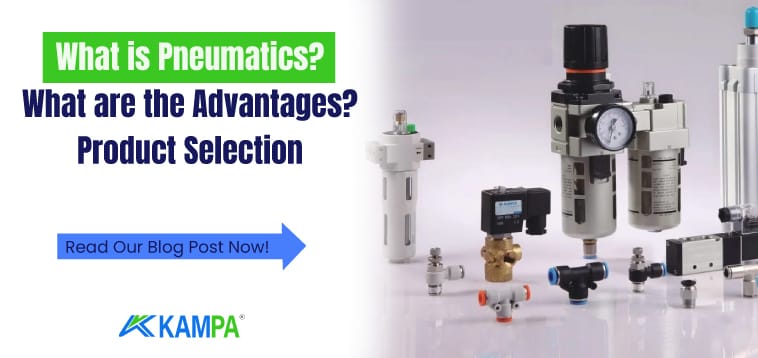What is Pneumatics? What are the Advantages? Product Selection
Pneumatics refers to the operating principle of systems that perform mechanical movements using compressed air or gas.
Table of Contents
These systems are used in many fields such as industrial automation, robotics, filling and packaging machines, CNC machines. They contain cylinders, valves and other mechanical parts that are driven by air or gas pressure, and this pressure is converted into mechanical motion.

Among the advantages of pneumatic systems,
- Low risk of ignition or explosion,
- Being economical,
- Easy and flexible installation,
- Long life span
- Fast working capacity can be counted.
Furthermore, the use of air as the energy source of pneumatic systems ensures that air is released back into the atmosphere after use, which is an environmentally friendly feature.
The history of pneumatic systems dates back to ancient Greece and is derived from the word ‘pneuma’, which means wind or breath. The development of modern pneumatic systems began in the mid-19th century and gained momentum, especially with power systems such as hand tools, drills and locomotives powered by compressed air. Today, pneumatic systems have become an indispensable part of industrial systems.
The working principle is based on converting the energy of pressurized air or gas into mechanical motion. The gases used in these systems are usually air taken from the atmosphere, but in some cases other gases such as nitrogen or carbon dioxide can also be used .
Since pneumatic systems operate at lower pressures than hydraulic systems, their equipment can be more economical and can reach high operating speeds.
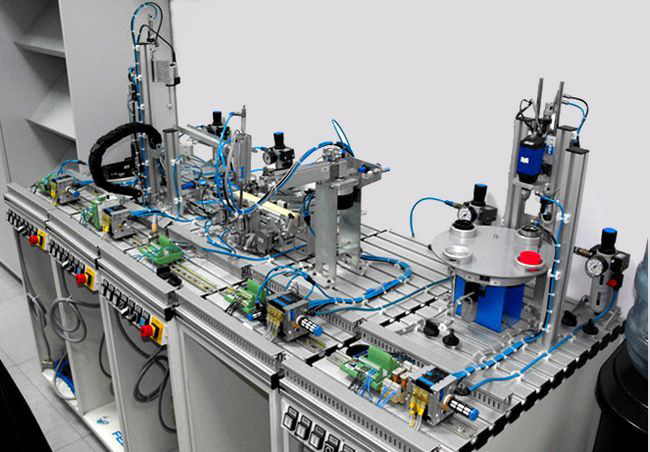
Pneumatic systems have a wide range of applications and can be found in many different sectors such as industrial automation, robotics, cleaning processes, painting processes, assembly lines, textile industry, vacuum applications, energy conversion plants, food industry, construction machinery and motor vehicles, ship and marine industry.
These systems offer significant advantages in terms of efficiency and safety and are considered one of the cornerstones of modern industry.
The future of pneumatic systems is bright. With the increasing importance of energy efficiency, sustainability and automation, pneumatic systems are expected to develop further and find new application areas.
The integration of these systems, especially with innovative materials and intelligent control technologies, increases their performance and diversity of applications. The evolution of pneumatics technology contributes to further automating industrial processes and increasing productivity.
Working Principle of Pneumatics Systems
The working principle of pneumatic systems is based on converting the energy of compressed air or gas into mechanical motion. In these systems, compressed air or gas is generated and stored with the help of a compressor.
Then, through control valves, the air or gas is directed to actuators, such as cylinders. The actuators translate the incoming compressed air into mechanical movement so that machine parts can move or perform work.
Here are the basic working steps of pneumatic systems:
Preparation->Pressurization->Direction->Transformation->Processing->Cleaning
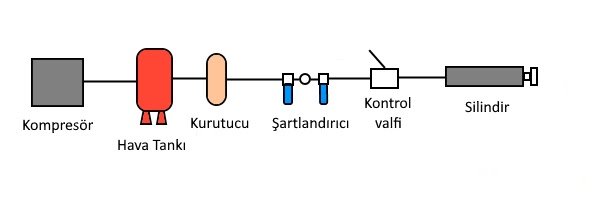
- Air Preparation: The air supplied by the compressors is cleaned of moisture and contaminants. This is done using air filters and dryers.
- Pressurization and Storage: The cleaned air is compressed by compressorsto a certain pressure and stored in air tanks.
- Control and Routing: Air is sent to where it is needed through control valves and diverters. These valves are used to start, stop, change the direction or adjust the flow rate of the air flow.
- Energy Conversion: When air reaches actuatorssuch as pneumatic cylinders or motors, pressure energy is converted into mechanical energy. This mechanical energy is used to perform various operations.
- Exhaust: The air used by the actuators is released back into the atmosphere after the process is completed.
The systems are preferred because they are simple and reliable, have fast response times and are easy to control. They also carry no risk of explosion or fire compared to electrical systems, making them ideal for use in hazardous environments.
Effectiveness and efficiency of systems,
- Air quality used,
- Preventing leaks in the system ,
- It depends on factors such as correct sizing and maintenance.
Therefore, the design and maintenance of systems is vital to optimize system performance.
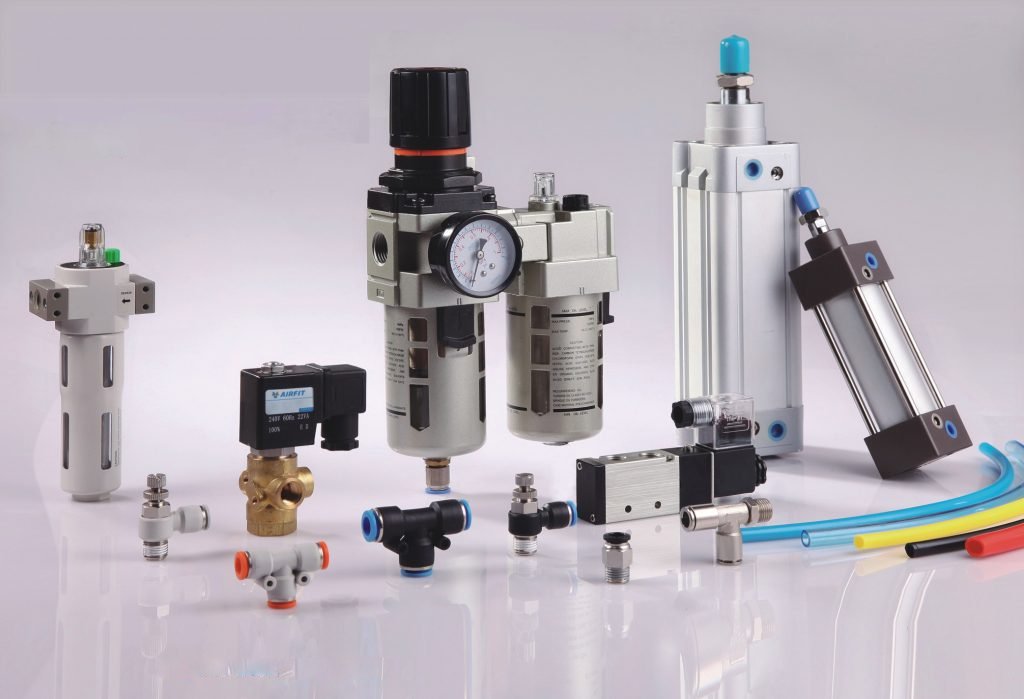
Advantages of Pneumatic Systems
The advantages of pneumatic systems are the main reason for their widespread use in industrial and engineering applications. Here are some important advantages of pneumatic systems:
- Safety: Pneumatic systems operate without the risk of explosion or fire, making them safe to use in hazardous environments.
- Simplicity and Reliability: Systems are often simple in design, making them reliable and easy to maintain.
- Speed and Motion Control: Pneumatic systems provide fast start, stop and speed control, making them ideal for precision operations.
- Flexibility: Pneumatic systems can easily adapt to different applications and operating conditions.
- Temiz Çalışma Koşulları: Pnömatik sistemler, çalışma ortamını kirletmez ve genellikle sessiz çalışır.
- Energy Efficiency: Properly designed and optimized systems can deliver excellent results in terms of energy efficiency.
- Low Cost: The installation and operating costs of the systems can be lower than other mechanical or electrical systems.
- Environmentally Friendly: The used air is released harmlessly back into the atmosphere after the process.
- Durability: Pneumatic systems are resistant to harsh operating conditions and corrosive environments.
- Easy Adaptation and Upgrade: Pneumatic systems can be easily integrated and upgraded with new technologies.
These advantages are the reasons why the systems are preferred in automation, assembly, manufacturing and many other industrial processes.
Pneumatic technology is a constantly evolving field of engineering and design, and is expected to become even more effective and efficient with future innovations. The flexibility and reliability these systems offer make them an essential part of modern industry.
Disadvantages
- Although the system is fast, speed control can sometimes be difficult.
- In some cases, extra filtering and drying is required.
- Compressors may need to run continuously to keep the air pressure constant. Due to these and other factors, a certain amount of noise pollution occurs.
- The compressibility of air poses challenges in terms of precision.
- There may be air leakage inside the system. This will have a negative impact on efficiency.
Pneumatic System Usage Areas
It has a wide range of applications and is used effectively in many different sectors. Here are some sectors where pneumatic systems are widely used:
- Automotive Industry: Used in automotive production lines, part assembly, painting and quality control processes.
- Production and Assembly: Robots and automated machines are preferred for fast and repeatable movements on production lines.
- Packaging and Filling: Systems are used for packaging and filling of food, pharmaceutical and other light industrial products.
- Medical and Health: Many devices used in hospitals and dentistry work with pneumatic technology.
- Food Industry: The systems provide hygienic and reliable solutions for food processing and packaging.
- Textile: Used for fast and precise movements in textile machines.
- Construction: Pneumatic hammers and drilling machines are common tools in construction sites.
- Agriculture: It is used in agricultural machinery, seed sowing and harvesting.
- Mining: Pneumatic drills and crushers are essential tools in mineral extraction.
- Transportation: Technology is used in transportation infrastructure such as railway braking systems.
In these sectors, it is preferred for its features such as speed, efficiency, safety and adaptability.
- Agriculture and livestock industry,
- Paper and leather industry,
- Textiles,
- Machine and machine tool construction,
- Nuclear power plant,
- Mining and construction,
- Glass industry,
- Metal processing,
- Foundry
- Assembly industry,
- Woodworking industry,
- Food and chemical industry,
- Petroleum Chemical industry,
- Stonemasonry and ceramic industry.
Technology is a constantly developing and renewing field and is expected to have an even wider area of use in the future. Especially with the increasing importance of energy efficiency and automation, systems are expected to develop further, find new application areas and increase their role in industrial processes.
These systems are considered an indispensable part of modern industry and continue to cement their place in engineering solutions.
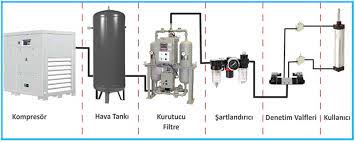
Pneumatic System Elements
They are systems that convert compressed air or gases into mechanical energy, which are widely used in industrial automation and control applications. A number of basic elements are required for these systems to work effectively. Here are the basic elements and their functions:
- Compressors: Compressors are machines that produce compressed air by compressing atmospheric air. There are various types such as piston, screw, rotor and turbo compressors.
- Air Boilers: These are pressurized vessels used for storing pneumatic energy. They meet the high air demand by preventing the compressor from running continuously.
- Conditioners: Circuit elements that make compressed air suitable for working conditions. It consists of three main elements: filter, pressure regulator and lubricant.
- Pneumatic Valves: They are circuit elements that control, stop or startthe flow of air , change the direction of flow and adjust the flow and pressure values. They are divided into three groups: directional control valves, flow control valvesand pressure control valves. Click for pneumatic solenoid valve prices.
- Pneumatic Cylinders: Actuators in which compressed air is converted into mechanical motion. The piston in the cylinder is moved by compressed air and performs various mechanical operations.
- Pneumatic Motors: These are pneumatic actuators that provide rotary motion. These motors, which work with compressed air, are used in different applications.
These elements are the basic building blocks of systems and ensure their efficient and reliable operation. The design and maintenance of systems depends on the correct selection and proper use of these elements.
In modern industrial processes, pneumatic systems play a major role, and their elements are being further improved with ever-evolving technology. The future of the systems looks bright with the increasing importance of energy efficiency and automation, and it is expected that these systems will further develop and find new areas of application.
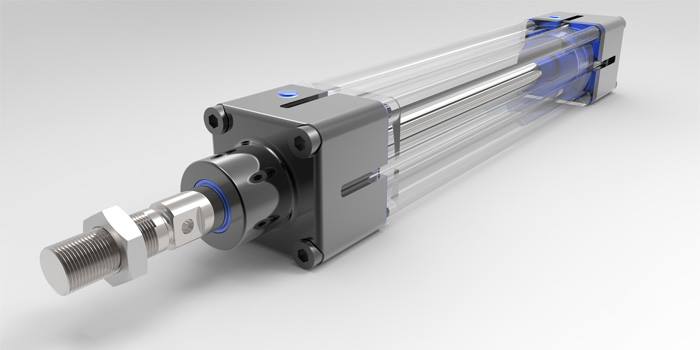
Considerations in Pneumatic System Product Selection
Choosing the right product is critical for pneumatic systems to operate effectively and efficiently. There are some basic factors to be considered when choosing a product. Here are some things to consider when choosing a product:
- Application Requirements: The characteristics and requirements of the application where the product will be used should be taken into account. For example, for an application that requires high speed, a fast response actuator should be preferred.
- Working Environment: The conditions of the environment in which the product will be used play an important role in the selection. Products made of more durable materials should be preferred for abrasive, dusty or humid environments.
- Pressure and Air Flow: The air pressure and flow rate to be used in the system are among the determining factors in product selection.
- Energy Efficiency: In order to reduce energy costs, products with high energy efficiency should be preferred. This reduces operating costs, especially in the long term.
- Size and Weight: Products should be selected in size and weight to suit the physical limitations of the application. Ease of installation and maintenance should also be considered.
- Material Quality: Products made of high quality materials should be preferred to ensure that the products are long-lasting and do not require frequent maintenance.
- Cost: Budget constraints are also an important factor in product selection. However, it should be noted that low-cost products can lead to higher maintenance and replacement costs in the long run.
- Brand and Supplier Reliability: Products from trusted brands and suppliers generally offer better customer support and warranty terms.
- Certificates and Standards: It is important for safety and performance that products comply with national and international standards and have the necessary certificates.
- Service and Support: Easily accessible technical support and service for purchased products should be considered in product selection.
Pneumatic product selection, in addition to the factors mentioned above,
- Type of valve to be used,
- Actuator torque value,
- Line pressure
- Fluid temperature,
- Connection dimensions
- It should also include special requirements, such as the form of control.
Each of these factors can directly affect the performance and reliability of systems.
Therefore, when selecting products, it is important to carefully evaluate all these factors and select the most suitable products according to the specific needs of the application. Choosing a suitable product will increase system efficiency while reducing operating costs and the need for maintenance.
System Setup Considerations
It is one of the indispensable elements of industrial automation and correct installation is vital for the efficiency and safety of the system. Here are some basic points to be considered in system installation:
- System Design: Before starting the system installation, a design should be made in accordance with the needs of the system. This design covers a wide range from the capacity of the compressor to be used, the size of the air tank, pipe diameters, valve and actuator selection.
- Compressor Selection: A compressor that can meet the air pressure and flow rate required by the system should be selected. The capacity of the compressor must be greater than the highest air consumption value of the system.
- Air Preparation Units: Air quality directly affects the life of the systems. Therefore, air preparation units such as filters, regulators and lubricators should be used to remove unwanted substances such as moisture and oil particles.
- Pipe and Hose Selection: The pipes and hoses that will provide air flow must be selected from materials suitable for system pressure and chemical resistance. It is also important to make the connection points correctly to avoid air leakage.
- Valves and Actuators: Valves and actuators, which are the control elements of the system, must have the features required by the application and must be installed correctly.
- Safety Precautions: Safety is one of the most important issues in systems. The system must have safety elements such as safety valves in case of a possible malfunction or overpressure.
- System Testing: After the installation is complete, the system must be thoroughly tested. During these tests, air leaks, pressure drops and the correct functioning of the control elements should be checked.
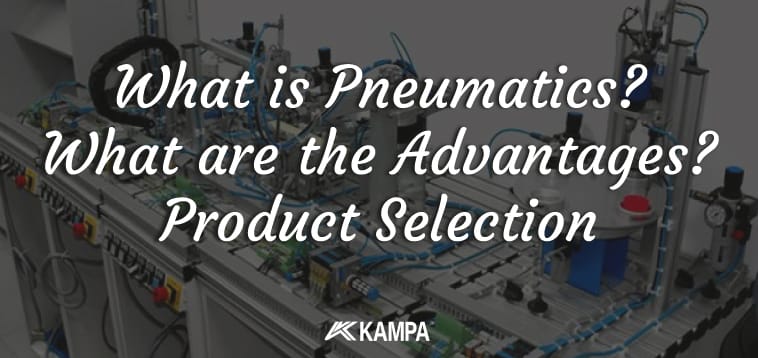
System installation is a process that requires detailed knowledge and experience. For this reason, it is important to get professional support during the installation phase to ensure long-lasting and efficient operation of the system. Training videos and resources can provide useful information in this regard.
The correct installation of systems contributes to reducing operating costs while increasing efficiency and safety in industrial applications. For this reason, being aware of the things to be considered in system installation should be among the priorities of every industry professional.
Click here for the information content of the hardware installation category that we can help you. Click here for pneumatic product prices.

